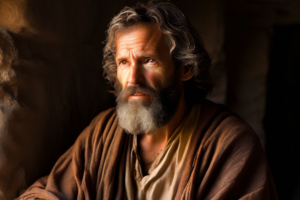Did you know that Alexander Graham Bell lived in Nova Scotia much of his adult life? We sure didn’t. We thought that he was an American, but he only spent a few years living in the U.S. This museum honoring his life, the Alexander Graham Bell National Historic Site, was so informative that I’ll cover it in 2 posts. Here’s some more red chairs that Canada places in spots that have beautiful views. We’ll show you more of the views at the end of these Bell posts.



As we entered, we saw this model of the HD-5. It was built in 1996 to help illustrate for us the development of the hydrofoil boats Bell and Casey Baldwin made in the early decades of the 1900s (we’ll see more of the hydrofoils later in the posts).

The HD-4 was the fastest of the Bell-Baldwin hydrofoils.


Let’s walk around the entrance to the museum and see what we can learn.

timeline

For Bell, the telephone was only the beginning of a lifelong pursuit of knowledge and invention. He started as a teacher of the deaf so they could join their world.


- 1862: Bell moves to London to live with his grandfather who had a huge influence on him.
- 1864: Bell’s father creates the visible speech phonetic alphabet
- 1865: Louis Pasteur invents pasteurization
- 1867: Bell’s brother, Ted, passes away from TB, Confederation unites Nova Scotia and New Brunswick with upper Canada (Ontario) and lower Canada (Quebec) as the Dominion of Canada
- 1870: Bell’s family moves to Canada after his sister also dies of TB and his father buys a home in Ontario


- 1871: Bell moves to Boston to teach at the School for the Deaf
- 1872: Thomas Edison perfects the duplex telegraph and Bell begins work on the multiple telegraph
- 1873: Northwest Mounted Police are formed
- 1874: Marconi is born in Italy, Bell gets funding for his telegraphy experiments
- 1876: Edison invents the phonograph, Bell gets a U.S. patent for “improvements in telegraphy,” first sentence is clearly transmitted over the telephone – “Mr. Watson, come here, I want to see you”


- 1877: Bell and Mabel (marry—more info later)
- 1879: Bell invents the audiometer to detect hearing loss or residual hearing
- 1880: French government awards Bell with the Volta Prize for telephone invention, Bell uses the money to finance experiments at Volta Laboratory, Bell’s 2nd daughter Marian is born


- 1881: photophone is invented transmitting sound on a beam of light, Bell tries to find the bullet in President Garfield following his assignation but isn’t able to and Garfield dies, Bell invents the vacuum jacket (more later), Bell experiments with Edison’s phonograph and calls it the graphophone, later he sells his rights to this invention to establish the Volta Bureau as a repository of information on deafness
- 1883: Bell’s 2nd son dies prematurely
- 1885: The Bells visit Baddeck (location of this museum) for the first time


- 1886: Bells purchased 50 acres of land and a nearby cottage, the Niagara Falls hydroelectric installation begins, the Canadian Pacific Railroad is completed, Mable sends a letter to her mother after taking a cruise on the local lakes
- 1887: Helen Keller’s father approaches Bell for advice on her education that begins their longstanding relationship with Bell


- 1888: Bell co-founds the National Geographical Society
- 1891: Bell describes the successful flight of the Langley flying machine


- 1893: Bell completes building his home here, Beinn Bhreagh Hall, a focal point of his experiments with flight, medicine, genetics, hydrofoils, and other topics (Bell named his home Beinn Bhreagh, (Beautiful Mountain in Gaelic, when he purchased around 600 acres to form the estate in the late 1880s.)
- 1895: x-rays are discovered, Bell begins experiments with kites
- 1896: Gold is discovered in the Klondike
- 1899: Bell develops a triangular variation of the Hargrave box kite (more later)


- 1899: Bell invites Marconi to Beinn Bhreagh
- 1901: Helen Keller visits Beinn Bhreagh, Queen Victoria dies


- 1902: Bell develops the principle of tetrahedral construction
- 1903: the Wright brothers have a successful flight at Kitty Hawk
- 1905: flies the Frost King, a 1300-cell tetrahedral kite that supports Neil MacDermid on a rope


- 1906: Bell escorts Edwin Grosvenor to Louisbourg (more later on that town) who declares it as the best day of his life
- 1907: the tetrahedral tower (more later) opens at Beinn Bhreagh, the Aerial Experiment Association (AEA) is formed (lots more later)
- 1908: Casey Baldwin flies the Red Wing 318 feet in Hammondsport, NY, making him the first Canadian to fly an airplane in what is also the first public flight in North America


- 1909: Admiral Perry reaches the North Pole in a National Geographic-sponsored expedition, more than 100 people witnessed the first successful powered flight in Canada as the Silver Dart lifted off the ice in Baddeck Bay (here) and flew 262 feet, the Model T Ford is produced
- 1910: the Bells visit Banff during a tour and stayed at the Banff Springs hotel loving their drive through Canada’s National Park


- 1911: Bell and Baldwin begin the HD series of hydrofoil craft at Baddeck with their first model, the HD-1
- 1912: the HD-2 reaches 50 mph before being disabled


- 1913: Bell develops the HD-3 as he continues research on structural issues
- 1914: Britain declares war on Germany and WW1 begins


- 1916: U.S President Taft invites Bell to participate in a League to Enforce Peace, the precursor to the League of Nations and the United Nations
- 1917: the Halifax Explosion (more as we move to Halifax) devastates this city
- 1918: WW1 ends
- 1919: League of Nations is created, the first successful helicopter flight occurs

Bell’s early years

After not doing well in high school, Bell spent 1862 in London with his grandfather, a celebrated professor of elocution and speech therapy.

father’s phonic alphabet called Visible Speech
Bell’s father had devised a universal phonetic alphabet by 1864. Bell started using his father’s alphabet to teach the deaf to speak at the Warwick Gardens school in London. And he was an instant success at the age of 21.

how visible speech works



The example of letter M sound.



family moves to Canada
As Bell starts his teaching career, tragedy struck when his younger brother, Ted, contracted TB and died in 1867. Just 3 years later, Bell’s older brother, Melly, died of the same disease. Alex, too, was in poor health. His father moved the family to a better climate.

Bell used the alphabet to teach himself the Mohawk language.


Bell moves to Boston to work
Bell also believed that the power of speech could help to remove barriers that separated deaf people from mainstream society. In 1871, he accepted a position at the Boston School for the Deaf and also set up his own private practice.

early students and how Bell taught
George Sanders at age 5 became one of Bell’s most successful pupils.


Another private student was Mabel Hubbard. When she started working with Bell when she as 15, she was deaf from scarlet fever when she was 5.


improving the telegraph
The race was on by the 1870s to improve the telegraph. Bell took up the challenge since he was ambitious—and he needed money.

the telephone
Bell knew something about electricity and a lot about sound, speech, and hearing. His idea? Create an electrical device that would work much like the human ear that would transmit speech like a talking wire.

On a hot day in June 1875, Watson accidentally plucked a transmitter reed on Bell’s apparatus. Bell heard the sound in another room. Watson had accidentally generated an electric current strong enough to activate Bell’s receiver. Bell quickly modified his apparatus so voice pulsations could duplicate what Watson had done, and it worked! The telephone was born.

On March 10, 1876, Bell called out his famous command to which Watson responded. Bell’s invention was now a working reality.

Bell and Mabel marry
As Bell was struggling with his experiments, he and his pupil, Mabel Hubbard, fell in love. He helped her with speaking better, and she helped him through frustrations and disappointments as he worked toward his telephone triumph.


Bell’s father writes her about his son and, in essence, gives his approval and blessing.

after the telephone and remembering the deaf
Bell was determined to show the world that his invention of the telephone was not a fluke. In 1880 France awarded Bell the prestigious Volta Prize. Bell used the prize money to establish the Volta Laboratory in Washington where they were living.

Bell’s heart was always with the deaf, working hard to have more qualified teachers of speech education and advocating day schools for the deaf instead of segregating them in boarding schools.

The Association merged with the Volta Bureau in 1908 and continues on today as the Alexander Graham Bell Association for the Deaf.

move to Nova Scotia

Helen Keller and her teacher, Anne Sullivan, visit Bell at Beinn Bhreagh.

Mabel at Beinn Bhreagh

Among other pursuits, she established the Young Ladies Club to encourage interest in public affairs among the women of the village.

Mabel was chiefly responsible for the management of this home. She created a happy home for her children and grandchildren.






Alexander Graham Bell was always learning and trying. In the next post we’ll see what he worked on and accomplished after the telephone that we all know about.




